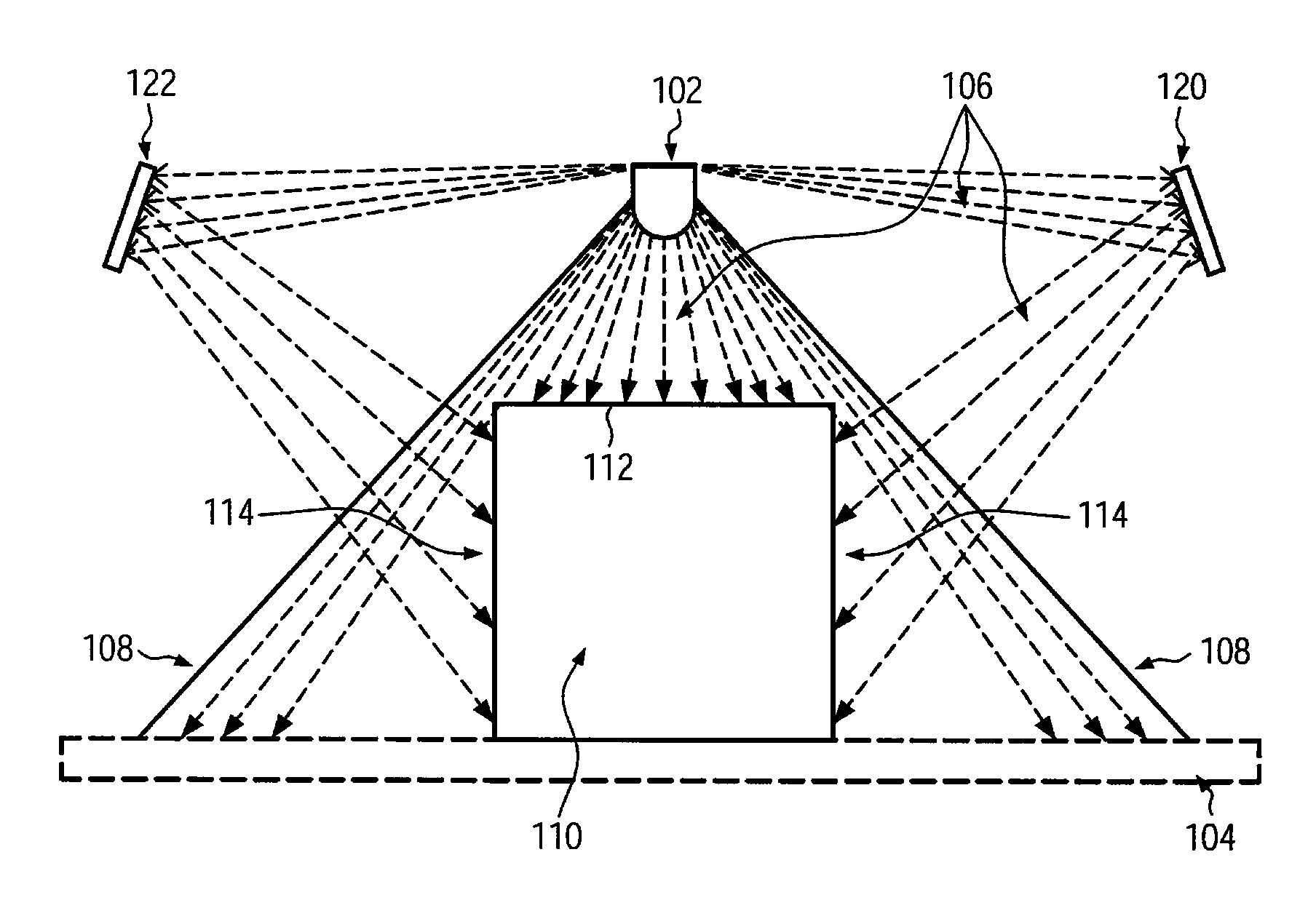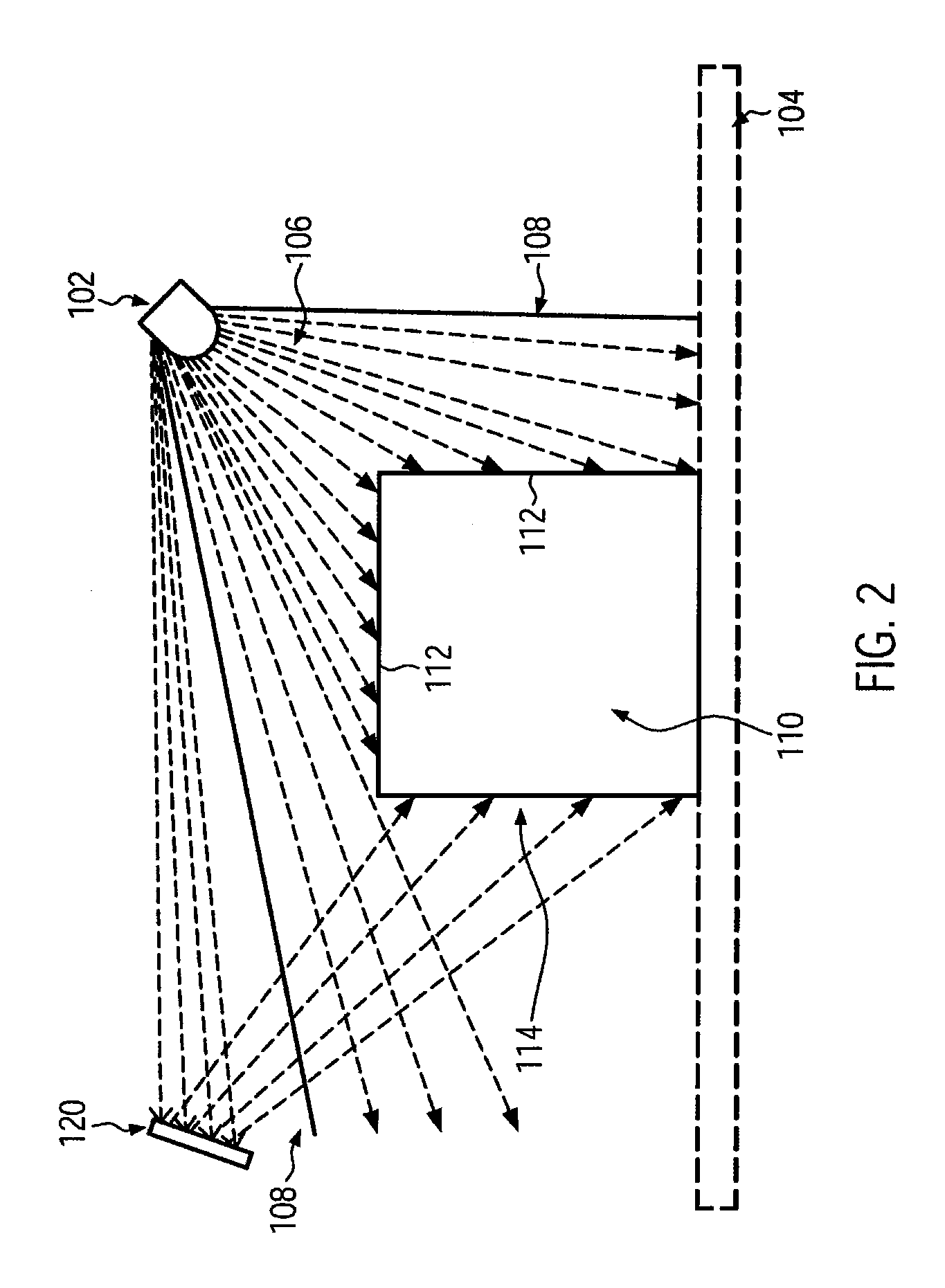Time of flight camera unit and optical surveillance system
a camera unit and optical surveillance technology, applied in the field of time of flight, can solve the problems of system cost, two complete tof cameras, and invisible areas 214/b> of objects, and achieve the effect of simple and secure way
- Summary
- Abstract
- Description
- Claims
- Application Information
AI Technical Summary
Benefits of technology
Problems solved by technology
Method used
Image
Examples
Embodiment Construction
[0032]Referring now to FIG. 1, a time of flight, TOF, camera 102 is combined with two mirrors 120 and 122 for deflecting the radiation 106 sent from the TOF camera 102 to an object 110 and vice versa. Although in FIG. 1 only the emitted radiation is depicted, of course also the reflected radiation from the object and the background runs along the shown path of rays, only with opposite direction. The radiation usually is emitted by light emitting diodes, LED, or infrared radiation emitting diodes, IRED.
[0033]The use of the mirrors 120, 122 allows measuring all surfaces of a three-dimensional body with one single TOF camera 102. The radiation beams 106, which are deflected by the mirrors 120, 122, are subjected to an additional electromagnetic phase shift of π by each reflection at the mirror surface resulting in a total of 2 π, when they are received back at the detector of the TOF camera 102. However, the phase of the modulation is not influenced by the reflection. Consequently, the...
PUM
 Login to View More
Login to View More Abstract
Description
Claims
Application Information
 Login to View More
Login to View More - R&D
- Intellectual Property
- Life Sciences
- Materials
- Tech Scout
- Unparalleled Data Quality
- Higher Quality Content
- 60% Fewer Hallucinations
Browse by: Latest US Patents, China's latest patents, Technical Efficacy Thesaurus, Application Domain, Technology Topic, Popular Technical Reports.
© 2025 PatSnap. All rights reserved.Legal|Privacy policy|Modern Slavery Act Transparency Statement|Sitemap|About US| Contact US: help@patsnap.com



